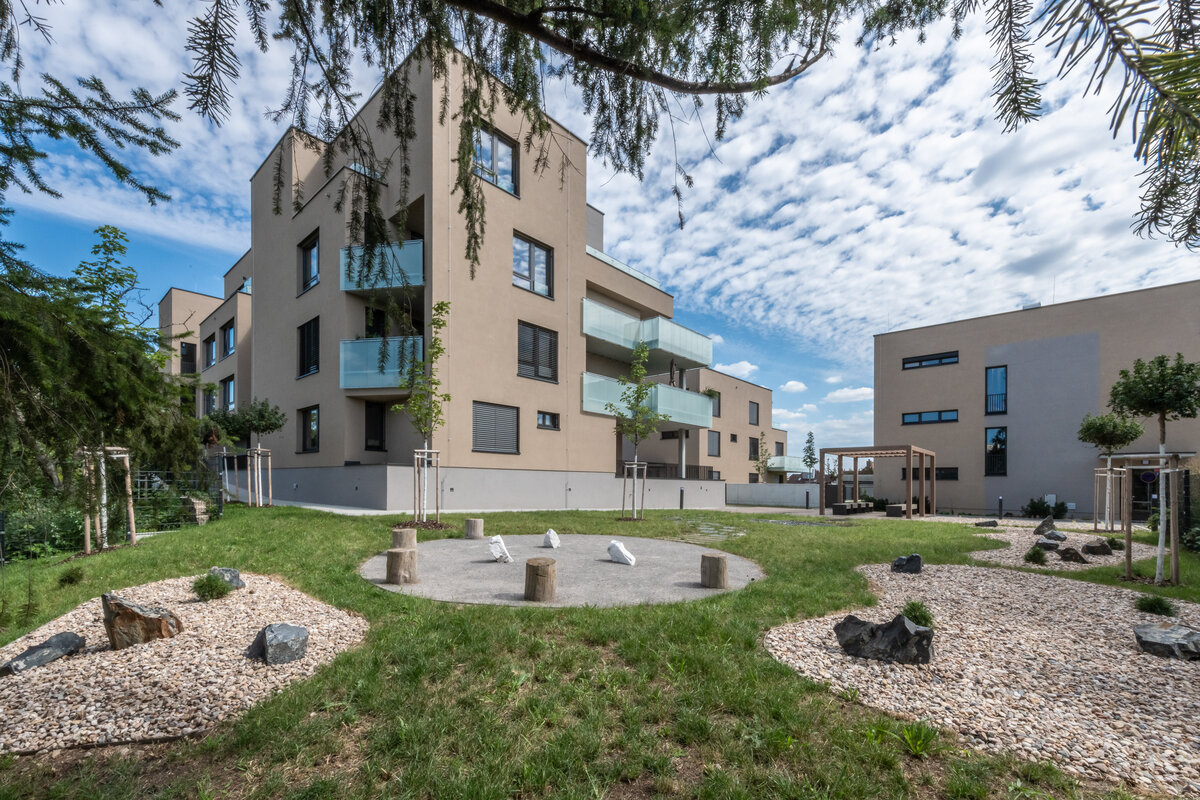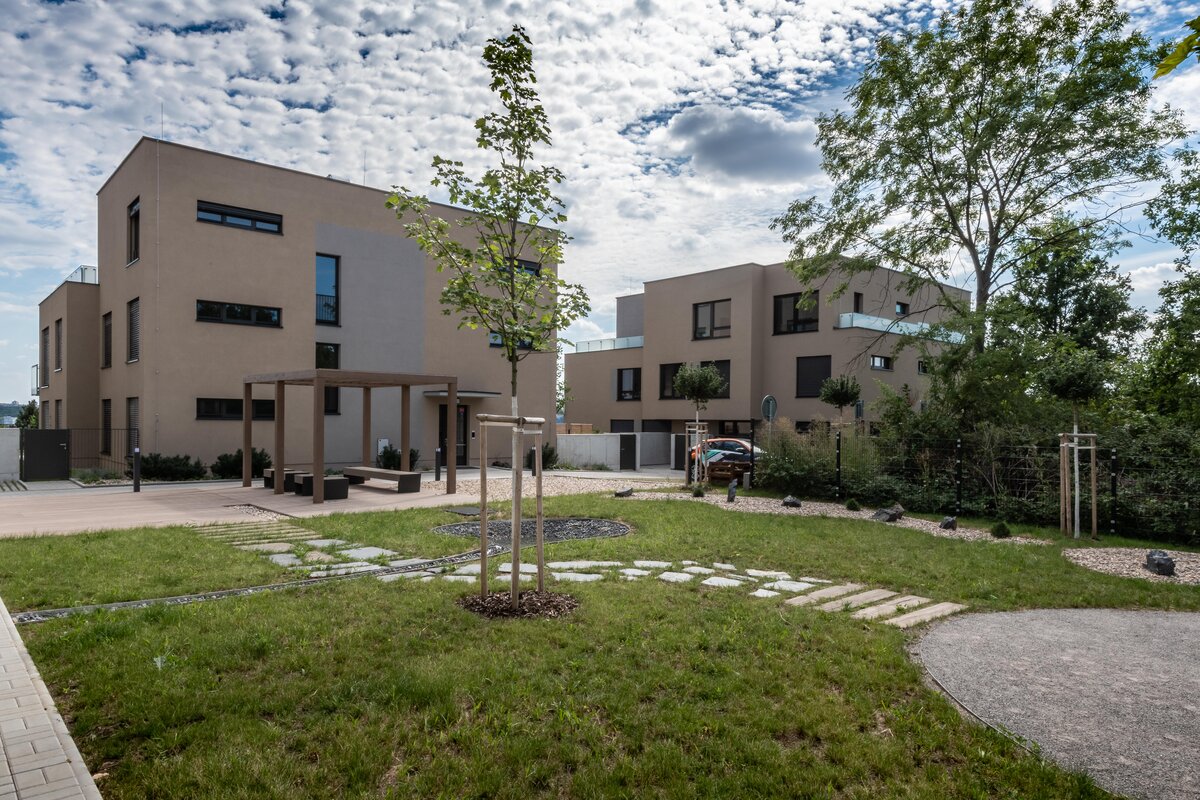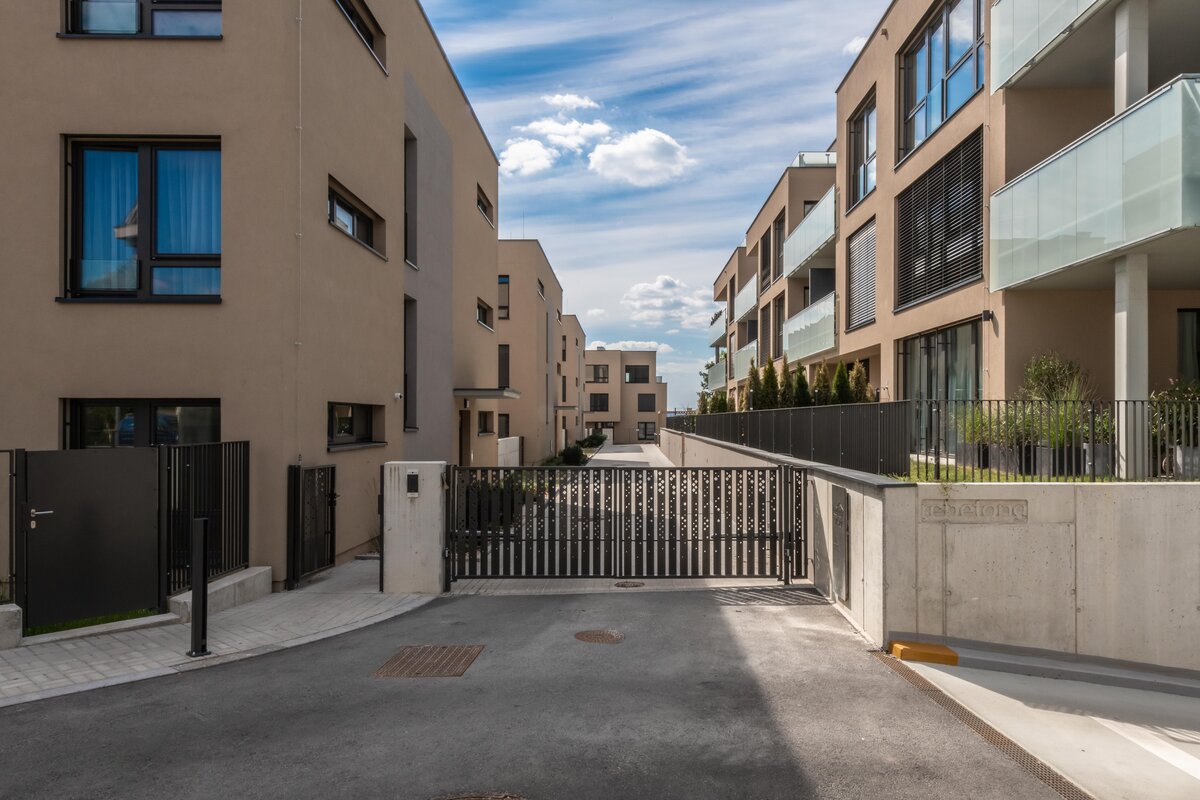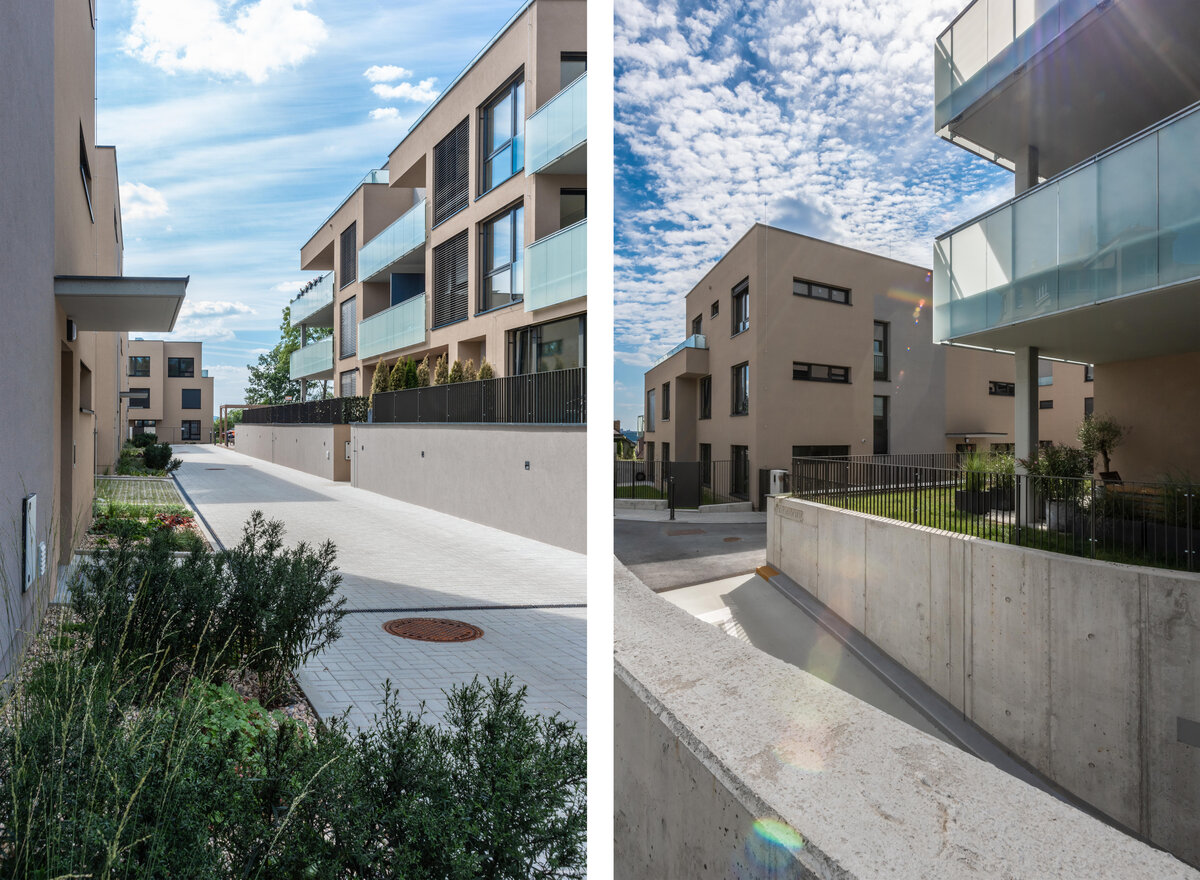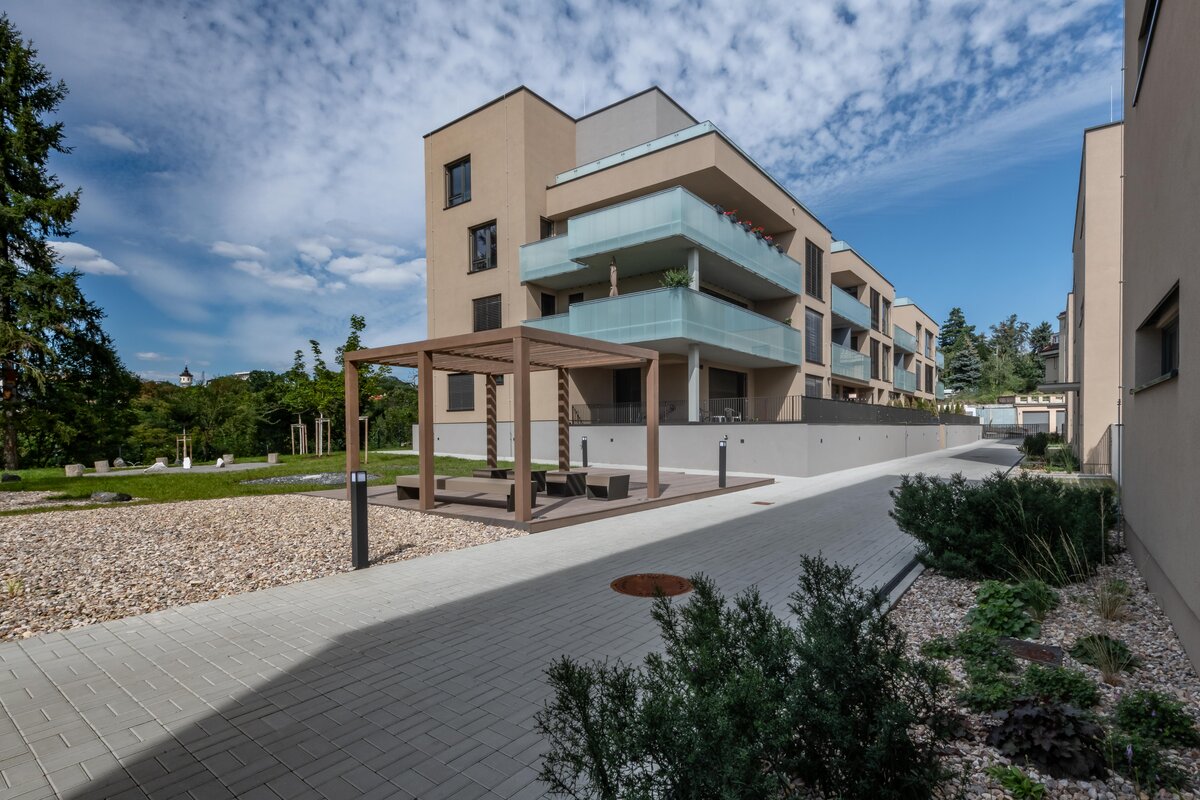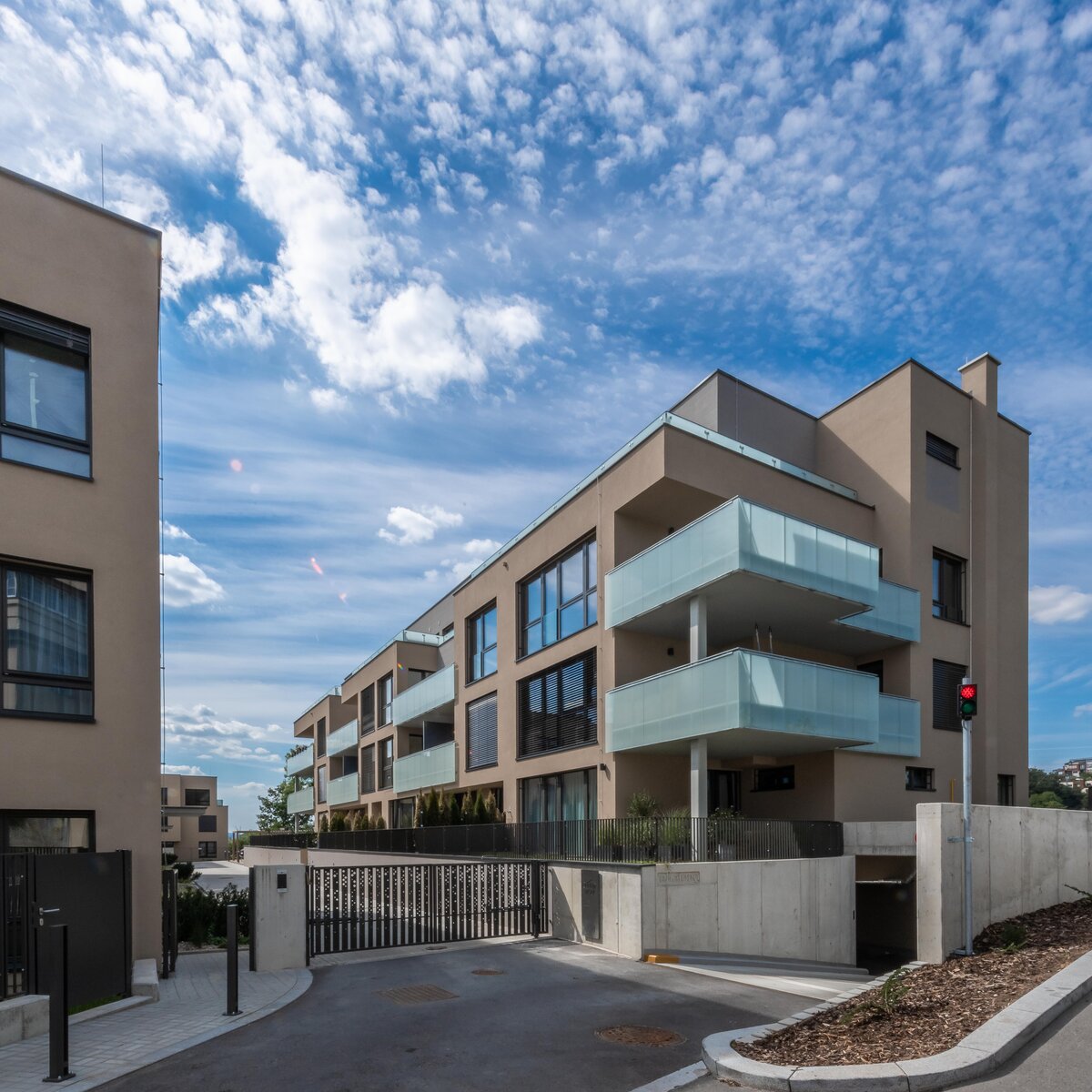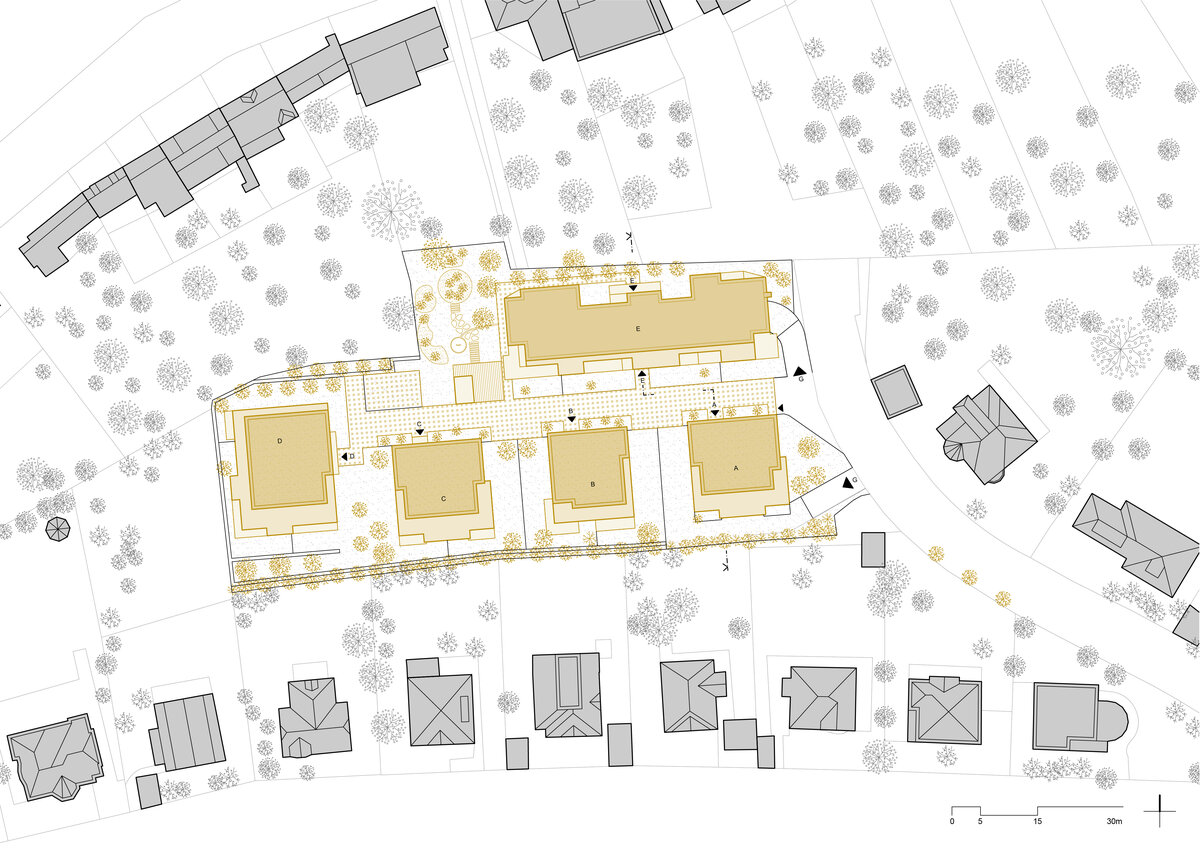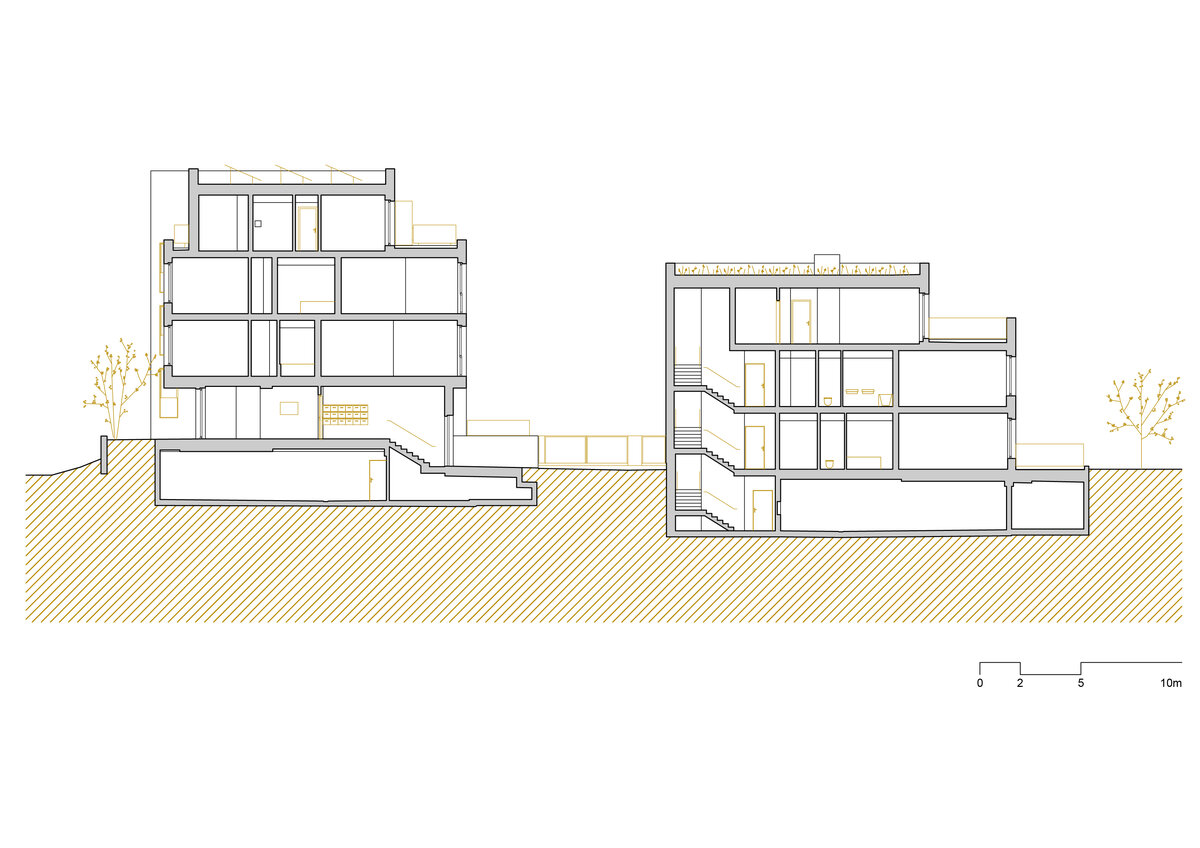| Author |
Oleg Haman, Veronika Hájková, Petr Jambor, Martina Hyťhová/ Casua (autorem dokumentace k územnímu řízení je společnost Aukett) |
| Studio |
|
| Location |
Čertův Vršek, Praha 8 |
| Investor |
Skanska Reality a.s. |
| Supplier |
Skanska a.s. |
| Date of completion / approval of the project |
March 2022 |
| Fotograf |
|
The Čertův vršek residence is an intimate project growing on one of the hills in Libeň. It is located at the end of the cul-de-sac of the same name and surrounded by large family villas and greenery. It will provide its residents with privacy and security, which is further enhanced by fencing the premises, an entrance gate and a camera security system. The project is divided into six sections, which have three to four floors above ground. The individual sections are arranged in two almost parallel lines, which squeeze between them an alley opening into a common relaxation garden. There are 39 new apartments in this project, the majority of which are apartments with a layout of 3+kk or 4+kk, with only two apartments on each floor and three unique 5+kk apartments on offer. Windows with a lowered parapet create the living rooms atmosphere, which bring plenty of daylight into the interior space with impressive views of Prague. All apartments have a balcony, loggia or terrace. Apartments on the first floor above ground have their own front gardens.
The apartment building is prepared according to the international BREEAM methodology, which evaluates the impact of the project on the environment and its overall sustainability. It thus has a whole range of technological solutions that will significantly reduce energy and water costs for future owners. Rainwater is collected in storage tanks, which is then used to water the greenery. The project also manages water in other ways – so-called grey water is used to flush the toilets, and photothermal panels located one if the sections of roof are used to heat domestic hot water. Extensive greenery is planted on the other roofs, which contributes to the improvement of the microclimate in the locality and at the same time actively counteracts temperature instability in the apartments under the roof during the summer months. Thanks to the thorough insulation of the building envelope and high-quality triple-glazed windows, the project achieves the low-energy standard with the energy performance certificate of building B - very economical. The ventilation of the apartments is controlled with recuperation.
This is the first project in our country whose foundation structures and some parts of the supporting structures are made of Rebetong. Developed by a team of ERC-Tech and Skanska, this 100% recycled concrete uses suitably processed construction rubble instead of natural stone. Rebetong can also use brick rubble, a recycled product that has not yet found full application in the construction industry. At Čertuv Vršek, Rebetong covered the consumption of more than 15% of all concrete, and thanks to this, up to 800 tons of aggregate were saved.
Green building
Environmental certification
| Type and level of certificate |
Breeam (very good)
|
Water management
| Is rainwater used for irrigation? |
|
| Is rainwater used for other purposes, e.g. toilet flushing ? |
|
| Does the building have a green roof / facade ? |
|
| Is reclaimed waste water used, e.g. from showers and sinks ? |
|
The quality of the indoor environment
| Is clean air supply automated ? |
|
| Is comfortable temperature during summer and winter automated? |
|
| Is natural lighting guaranteed in all living areas? |
|
| Is artificial lighting automated? |
|
| Is acoustic comfort, specifically reverberation time, guaranteed? |
|
| Does the layout solution include zoning and ergonomics elements? |
|
Principles of circular economics
| Does the project use recycled materials? |
|
| Does the project use recyclable materials? |
|
| Are materials with a documented Environmental Product Declaration (EPD) promoted in the project? |
|
| Are other sustainability certifications used for materials and elements? |
|
Energy efficiency
| Energy performance class of the building according to the Energy Performance Certificate of the building |
B
|
| Is efficient energy management (measurement and regular analysis of consumption data) considered? |
|
| Are renewable sources of energy used, e.g. solar system, photovoltaics? |
|
Interconnection with surroundings
| Does the project enable the easy use of public transport? |
|
| Does the project support the use of alternative modes of transport, e.g cycling, walking etc. ? |
|
| Is there access to recreational natural areas, e.g. parks, in the immediate vicinity of the building? |
|
